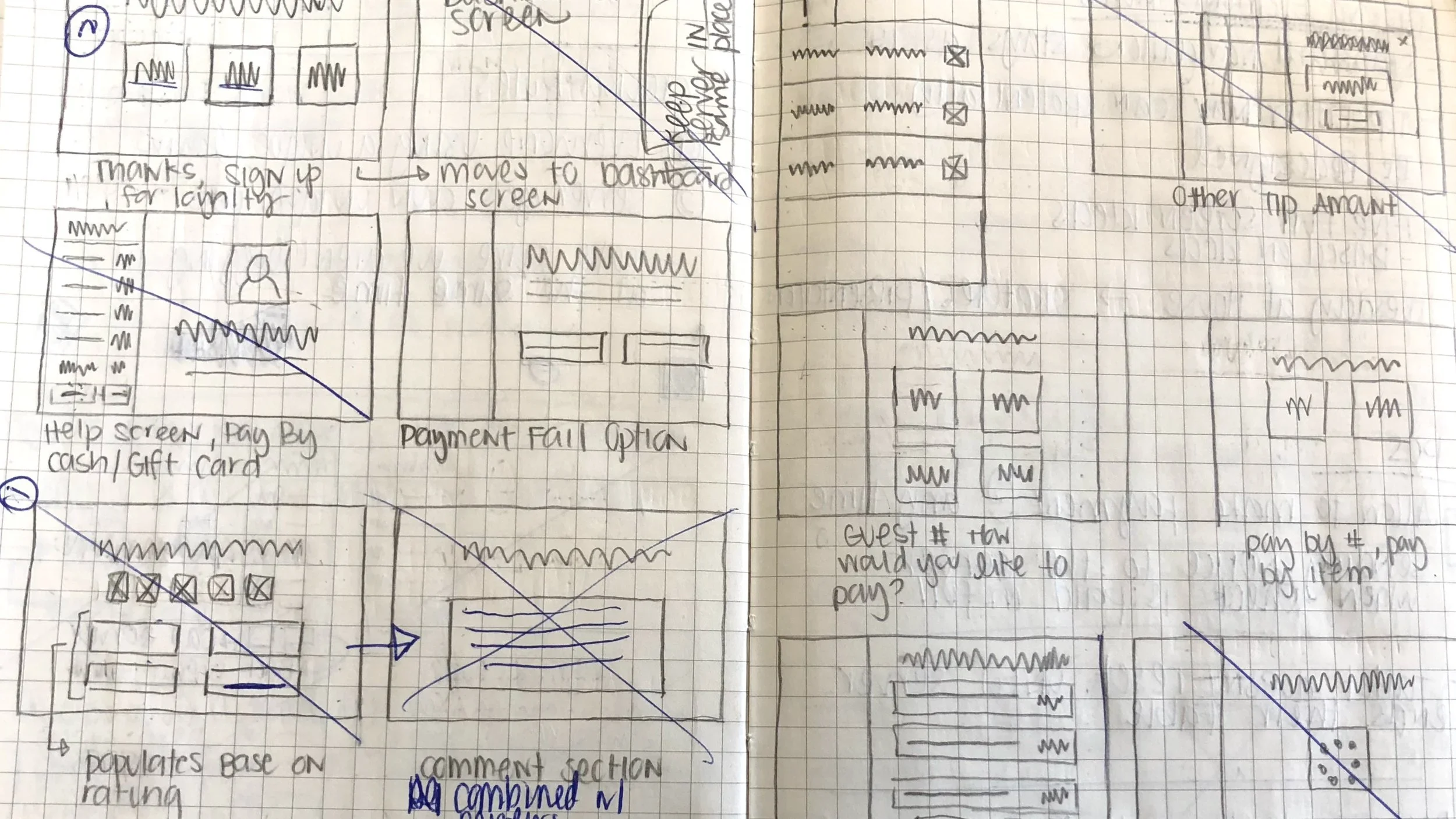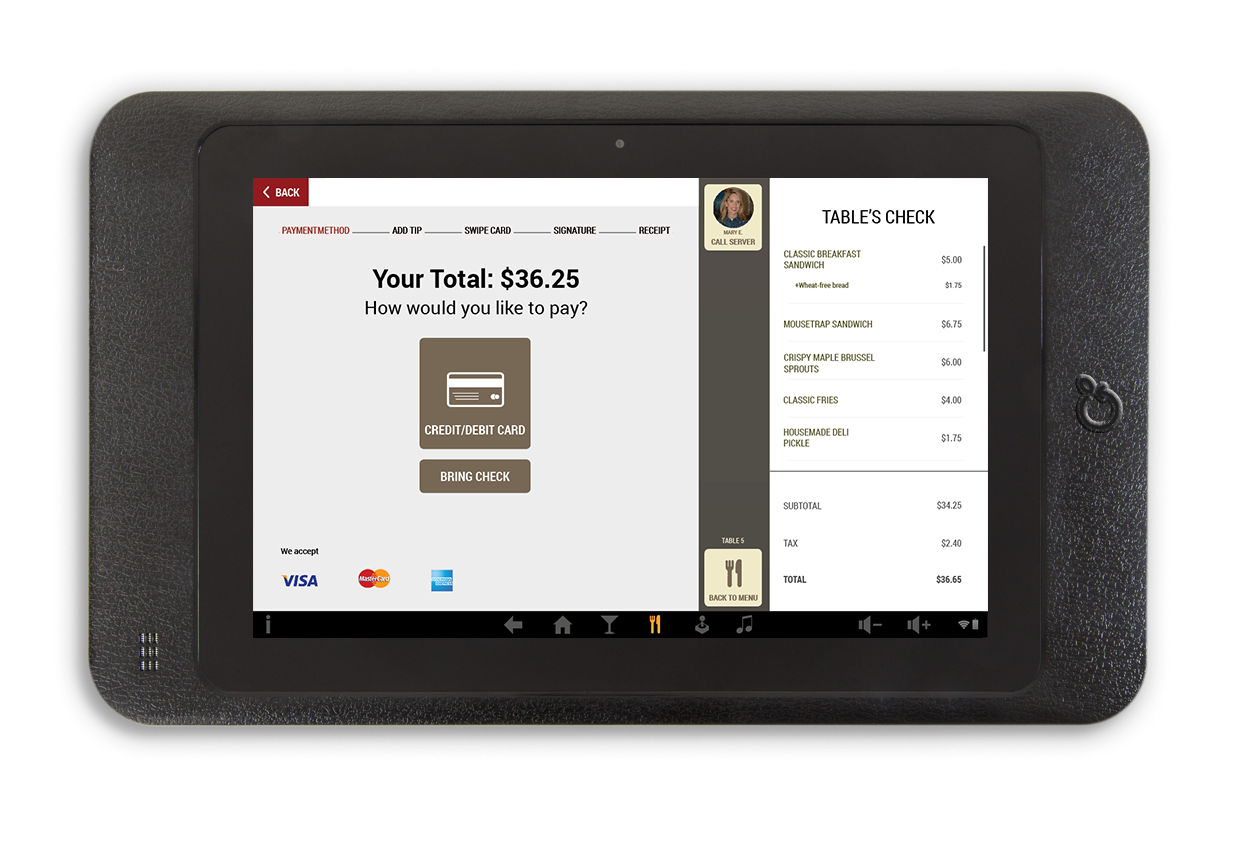Designing Tablet Payments at Tanjarine
As Lead Designer, I worked end-to-end on the creation of the tablet payment feature. I partnered with engineering to understand POS system integrations, collaborated with restaurant stakeholders to account for business needs like surveys and marketing, and led design research to validate usability with diners across multiple locations.
Problem
Tanjarine was a tabletop tablet platform in casual dining restaurants, offering diners the ability to browse menus, order food and drinks, play games, and call for service. While these features improved convenience, both diners and restaurant owners highlighted a critical gap: the ability to pay directly on the tablet. Payment was a natural extension of the experience and a clear opportunity to increase diner satisfaction and restaurant efficiency. I was tasked with designing this payment experience.
Accommodating Multiple Requirements
The payment experience had to feel seamless within the existing tablet environment. Leveraging the design system allowed me to maintain consistency while giving restaurants the flexibility to incorporate their branding. Beyond core payment, owners requested features like customer experience surveys and the ability to collect diner emails for marketing, so I designed modular elements that could flex to these needs without adding friction for diners.
The most complex challenge was backend integration. Every restaurant used a different point-of-sale (POS) system, so I worked closely with engineers to understand how the APIs would interact, what data could be pulled, and how it should surface to diners. This collaboration informed not only technical feasibility but also the structure of the wireframes.
Validating with Users
Because the concept of paying at the table on a tablet was still new in 2014, we needed to build trust with a broad audience. I created a functional prototype integrated with a Micros POS system. I ran tests in both California and Illinois to capture diverse user feedback.
The tests revealed that diners found the process intuitive and simple — a key validation that the feature would drive adoption rather than confusion. This gave us confidence to expand rollout to additional restaurants and POS systems.
Impact
User testing confirmed that diners were comfortable paying through the tablet, and restaurant owners appreciated the added flexibility for branding and marketing. The payment feature was integrated into multiple restaurants before the company folded in early 2015.
For me, this project was a powerful example of designing at the intersection of experience, business needs, and technical complexity. I learned how to balance seamless UX with stakeholder requirements, and how close collaboration with engineering can unlock both feasibility and design clarity. Even though Tanjarine ultimately didn't survive as a company, this feature represented a step forward in how technology could transform the casual dining experience.



